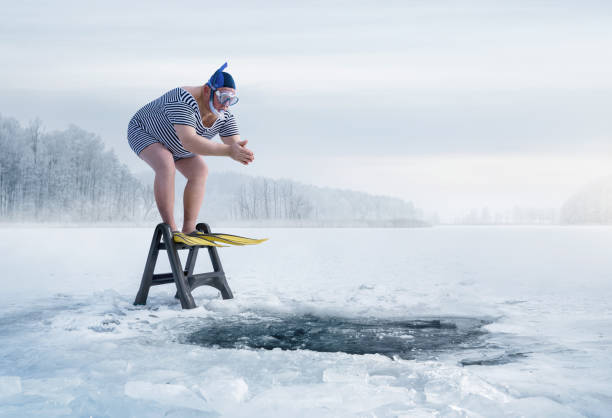Polar Plunge: The Chilling Thrill of Ice Water Immersions in Sports
In the world of sports, athletes are often seen pushing the boundaries of their physical limits, continuously seeking innovative ways to enhance their performance and recovery. One such method that has recently gained traction among athletes is ice water immersion, or more colloquially known as the Polar Plunge. This chilly practice, steeped in history, science, and a dash of bravery, has been hailed by many as a game-changer in sports recovery and performance enhancement.

A Frosty Dip into History
The practice of ice water immersion isn’t a modern-day phenomenon. It traces its roots back to the ancient cultures of Rome and Scandinavia, where frigid dips in icy waters were part of regular rituals. The Romans, known for their elaborate bathing rituals, alternated between hot and cold baths as a part of their health regimen. The Scandinavians, on the other hand, believed in the invigorating and restorative power of icy waters and regularly took dips in frozen lakes and streams. The tradition continues today with the annual ‘Polar Bear Plunge’ events, where brave souls jump into icy waters for fun, charity, or as a celebration of the New Year.
The Science of Shivers: How it Works
The fundamental principle behind ice water immersion is the body’s physiological response to extreme cold. When the body is exposed to icy water, it experiences a shock that triggers a series of reactions. Blood vessels constrict, reducing inflammation and swelling. The cold also numbs nerve endings, providing instant relief from pain.
Moreover, the plunge forces the body into survival mode, causing it to burn more energy to maintain its core temperature. This process, known as thermogenesis, can enhance metabolism and fat burning, potentially aiding weight loss and athletic performance.
Today’s Chilled Trends: Ice Baths and Cryotherapy
In today’s sports world, ice water immersion has evolved into two primary forms: ice baths and cryotherapy. Ice baths, which involve immersing oneself in a tub filled with ice-cold water, are popular among endurance athletes for their recovery benefits. Cryotherapy, a more high-tech and less wet approach, exposes the body to extremely cold air for a few minutes and is favored by many professional athletes and teams.
Both methods have been credited with reducing muscle inflammation and soreness, improving sleep, boosting mood, and enhancing overall recovery. However, the scientific community is divided on their effectiveness, with some studies showing significant benefits, while others suggest the effects may be more psychological than physiological.
The Cold Hard Truth: Weighing the Pros and Cons
Like any training method or recovery strategy, ice water immersion has its share of pros and cons. On the upside, many athletes swear by its effectiveness in reducing muscle soreness and speeding up recovery. The process is also said to build mental toughness, an invaluable trait in the high-pressure world of sports.
On the downside, the practice can be uncomfortable, even painful for some. There are also potential risks to consider, such as hypothermia and cardiovascular stress, particularly for those with pre-existing health conditions. Hence, it’s crucial that athletes consult with their healthcare providers or sports trainers before incorporating this practice into their routines.
Cold Comfort: Taking the Plunge in Real-World Sports
Despite the debate surrounding its efficacy, ice water immersion continues to be a popular practice among athletes across various sports disciplines—from footballers and marathon runners to CrossFit enthusiasts and MMA fighters. The allure of quicker recovery times and boosted performance, coupled with the mental challenge, seems to outweigh the initial discomfort of the icy plunge.
While more comprehensive research is still needed, the evolving practice of ice water immersion serves as a testament to athletes’ relentless pursuit of better performance and recovery methods. It’s a chilling reminder that sometimes, the path to greatness requires diving headfirst into the unknown—or in this case, the unbearably cold.




